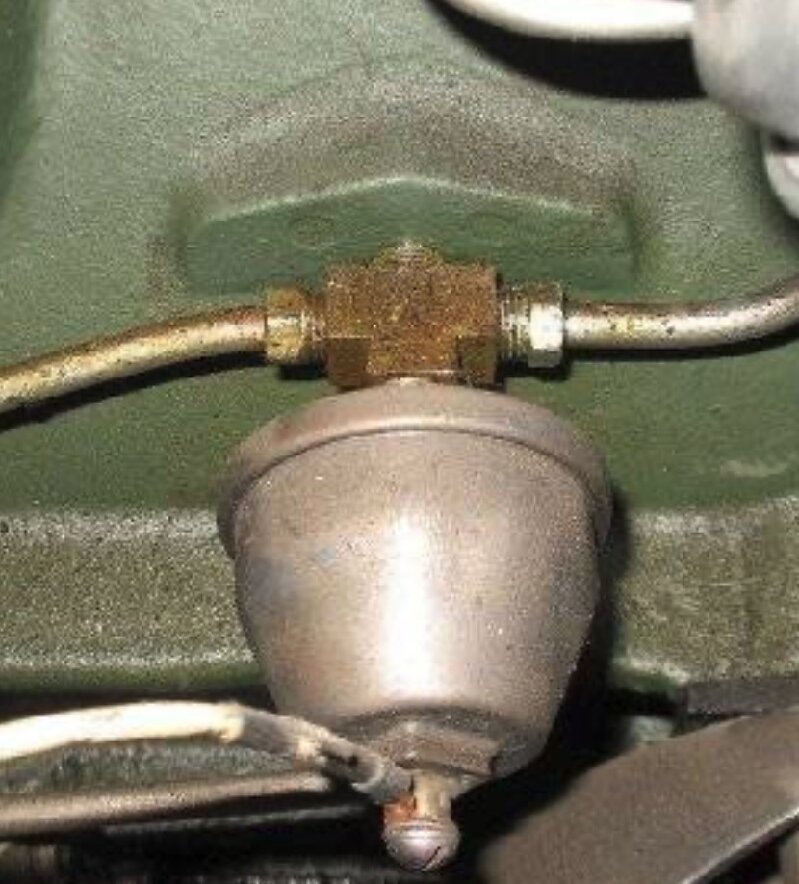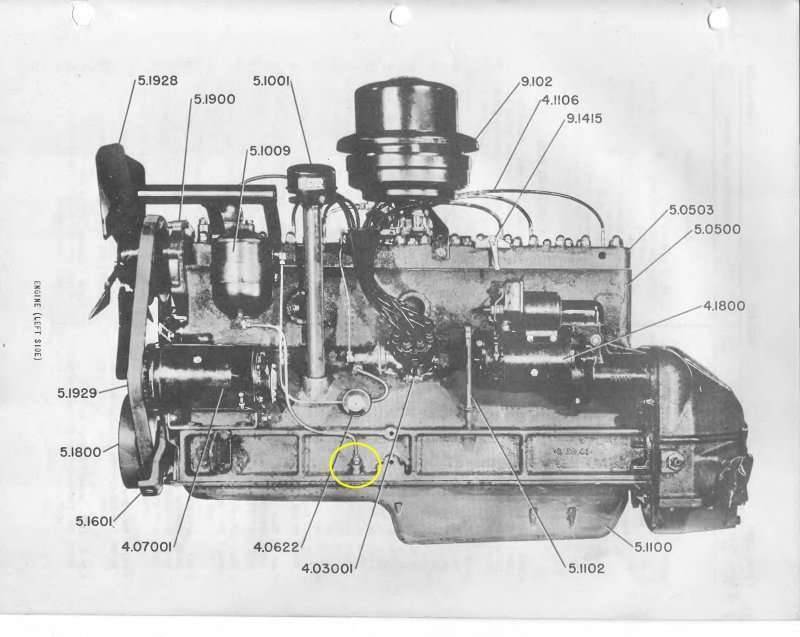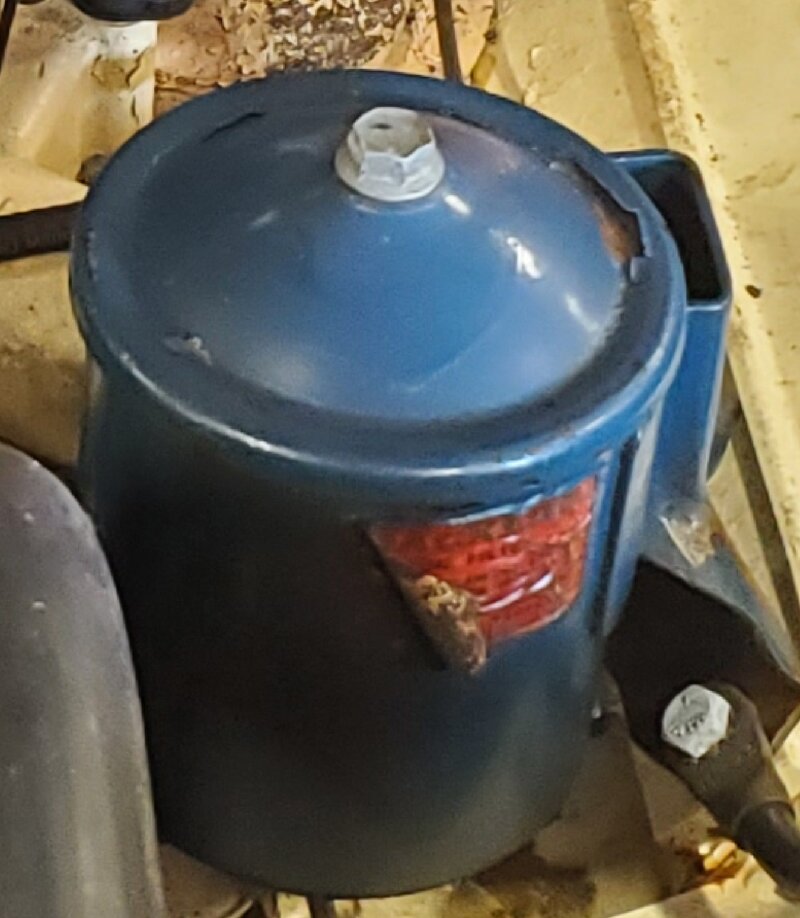|
Re: 1951 oil filter
|
||||
|---|---|---|---|---|
|
Webmaster
|
Posted on: 2024/6/18 16:07
|
|||
|
-BigKev
1954 Packard Clipper Deluxe Touring Sedan -> Registry | Project Blog 1937 Packard 115-C Convertible Coupe -> Registry | Project Blog |
||||
|
||||
|
Re: 1951 oil filter
|
||||
|---|---|---|---|---|
|
Webmaster
|
Filter Fram C134PL or Napa/WIX 1080
As found in the Part X-Ref here on the website.
Posted on: 2024/6/18 16:09
|
|||
|
-BigKev
1954 Packard Clipper Deluxe Touring Sedan -> Registry | Project Blog 1937 Packard 115-C Convertible Coupe -> Registry | Project Blog |
||||
|
||||
|
Re: 1951 oil filter
|
||||
|---|---|---|---|---|
|
Forum Ambassador
|
Plumbing sort of depends on which version filter you have and your block casting. Starting in 51 the blocks should all have a cast in port for the filter oil return located in the block just above the oil pan. If the car never had a filter this will be unused and plugged. On those blocks, oil drains out of the filter and drops straight into the pan. On 50 and earlier 288/327 blocks there was no return port so filter return oil was introduced back into the engine by piping it to the valve lifter gallery supply port (upper port on block). The low pressure and reduced volume out of the filter was adequate if the engine had solid lifters but could cause issues with hydraulic lifters hence the change in 51 to have all filter return oil drop into the pan. If by chance there is an earlier block in the car but it has hydraulic lifters you can try the method in the filter installation drawing but also be prepared in case you need to reinstall the short pigtail and add a dedicated return port if the lifters start becoming noisy or otherwise acting up.
The factory filter canister had several versions and they all look very similar. Unless you know your filter assy is correct as supplied for the 51 car, because of all the mixing over the years if yours came from ebay or a parts supplier you could have one of the earlier versions and will need to determine which one it is so it can be plumbed properly. All the lines were 1/4" steel tubing. Prewar canisters have a fairly pointed bottom and have the inlet on the bottom and outlet on the side. Those need an orifice in one of the supply fittings to limit the amount of oil that can flow thru the filter. Packard put the orifice in the elbow where the supply tube attaches to the bottom filter port by filling the opening in the brass elbow with solder and then drilling a 5/64 hole thru the solder. Later they put the orifice in one side port of the 4 way brass fitting where the supply line connects to the engine supply port (lower port on block). Second version early postwar filters had a flatter bottom with the inlet on the side and outlet on the bottom but also needed an orifice. Final version filter which a 51 would have had will have the inlet on the side, outlet on the bottom but the orifice is built into the center pipe of the canister via one or two fairly small holes drilled in the pipe. The holes are sort of in the middle to low third of the canister and just above where the bottom of the filter element will sit. Here are a few photos. Kev already posted the factory install for engines without the return port. First photo is the 4 way block with the filter line on the left and small pigtail to valve lifter gallery port on the right. Second is from the parts manual showing the cast in return port standard on later blocks circled in yellow. That engine is a 356 but the smaller 288/327 blocks have a similar return port just above the pan located a bit closer to the front of the engine almost directly under the oil filler tube.
Posted on: 2024/6/18 16:33
|
|||
|
Howard
|
||||
|
||||
|
Re: 1951 oil filter
|
||||
|---|---|---|---|---|
|
Home away from home
|
Not a great photo but this is the type of filter canister you should have. If different, then it may be aftermarket or prewar so would have to be plumbed accordingly. For the stock type, I may have a spare bracket but not sure until I next go to my Oregon shop. Note that the t-fitting the Howard posted is, as I recall, metered on one side so not just a standard hardware item.
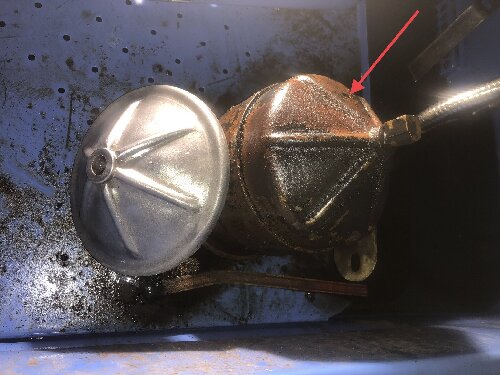
Posted on: 2024/6/18 16:40
|
|||
|
All generalities are false.
Once I thought I was wrong but I was mistaken. Don Pierson Packard / IMPERIAL page CA DMV Licensed Vehicle VIN Verification 1951 Henney-Packard 3-Door Long Wheelbase Air Force Ambulance The 1951 Henney-Packard is For Sale! 1954 Packard Patrician 1954 Packard Patrician Parts Car 1956 Clipper Custom Sedan |
||||
|
||||
|
Re: 1951 oil filter
|
||||
|---|---|---|---|---|
|
Just can't stay away
|
Thank you guys for the assistance I really appreciate it. I didn't even see before that there was a parts reference page that will come in handy in the future! Although I do have a question here please correct me if in wrong. My car seems to not have a original filter hookup before. So I'll have to put a 3 way T in and plug those into the filter as well as the plug to the crankcase? I looked at the diagram and I believe I found it below of the oil filler. Is this it? Also I took some pictures of the oil cannister and it definitely isn't a 51 going off of the pictures I'm assuming it's for a earlier model?
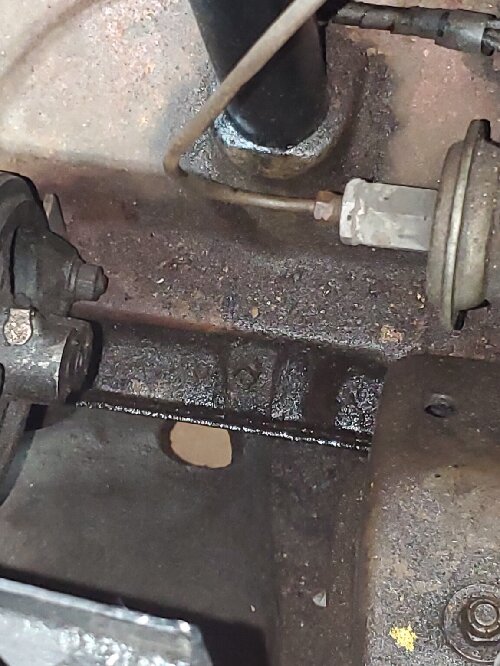 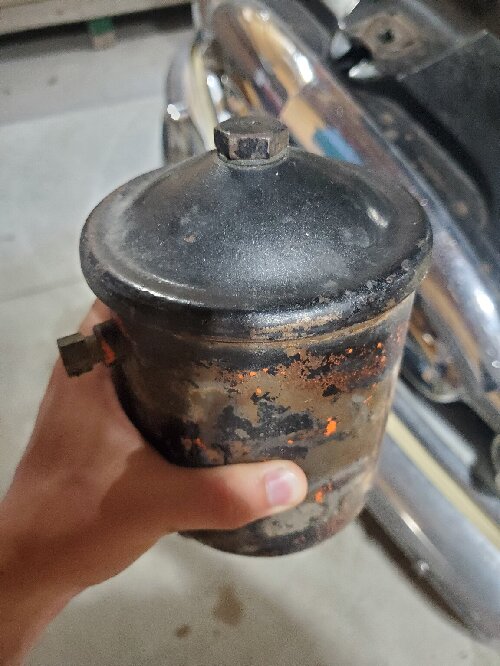 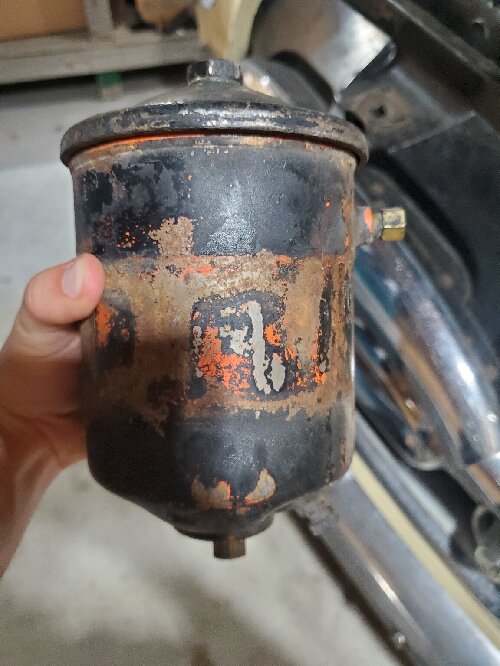
Posted on: 2024/6/18 18:07
|
|||
|
||||
|
Re: 1951 oil filter
|
||||
|---|---|---|---|---|
|
Home away from home
|
Can't answer that question. But I highly recommend checking out the Parts List on the left for the diagram plates shown, and the Service Index, and reading the Service Manual, before working on any non-trivial part of the car. It's common to still have questions, but it's a good way to get some basic info and understanding.
Posted on: 2024/6/18 18:10
|
|||
|
1955 400 | Registry | Project Blog
1955 Clipper Deluxe | Registry | Project Blog 1955 Clipper Super Panama | Registry Email (Parts/service inquiries only, please. Post all questions on the forum.) service@ultramatic.info |
||||
|
||||
|
Re: 1951 oil filter
|
||||
|---|---|---|---|---|
|
Webmaster
|
Technically it's a 4 way T. Feed from the block, oil sender port, filter feed port, port for the pigtail line to the lifters.
The port for the filter should have has a smaller orifice to restrict the amount of oil to the filter, so the lifters always get the bulk of the oil. I have a prewar filter on my 54 and the one you have looks like mine.
Posted on: 2024/6/18 18:55
|
|||
|
-BigKev
1954 Packard Clipper Deluxe Touring Sedan -> Registry | Project Blog 1937 Packard 115-C Convertible Coupe -> Registry | Project Blog |
||||
|
||||
|
Re: 1951 oil filter
|
||||
|---|---|---|---|---|
|
Forum Ambassador
|
That is the return port and you will need to get a fitting to use it. Fitting will be 1/8 NPT pipe on the block side to a 1/4 inverted flare tube on the other. You will need to decide if a straight fitting or angled elbow will better suit where and how you are wanting to run the tubing. The tubing will need to have a flared end and a nut that threads into the fitting. Some parts stores sell fixed length 1/4" steel tubing in their brake line departments. Those come with nuts and flares already installed but lengths are limited so you might not find exactly what you need. A little extra length can be taken care of with creative bends but too short or way too long and you will need to custom make your own. One thing to be cautious of if you buy premade tubes is they are often on a rack and metric sizes can get mixed in with SAE. If you do make your own, steel tubing is a pain to flare so try to get a length of 1/4" copper nickel or Cunifer tubing instead. That is much easier to bend and flare but if you are looking for a stock appearance it is more copper in color.
The factory 4 way block as shown in the earlier post may be hard to find. I believe Packard made their own in that specific layout or had it specifically made so won't be found as a common item. Possibly one of the used vendors or someone with a parts car will have an original. The standard modern 4 way cross with one NPT port and 3 inverted flare ports may also not be stocked at many places so can also be hard to find. At one time Max Merritt had put together a regular cross with a separate nipple that mimicked the original and worked well. You can also adapt something using the micky mouse combo of tees and close nipples as Packard did before they had the block. Those are sort of unsightly but will work. Here is an example of the tee and nipple arrangement. 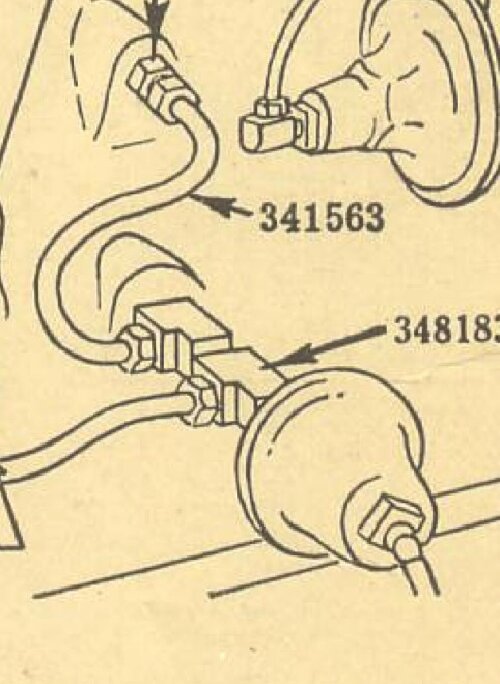 To me, the canister looks postwar in shape but with the hints of orange paint it may be aftermarket or off another brand engine or from one where an owner got carried away with orange paint. Clean it a bit and look near each fitting and see if you can see an inlet or outlet stamped in the metal canister. If you find a label then plumb accordingly. Then check the center pipe when you clean out the unit and look for any very small holes drilled in the length. If you find one or two small holes then it may have a built in orifice but if the holes are numerous or fairly large then there is no restriction and you will need to add something in one of the fittings. If no in-out labels or restrictions to flow are found it will be a guess. If I were doing it then presuming the element Kev mentioned will fit, I would try for a side inlet. To me the large outer area of the element would then get the dirty oil and be less likely to get clogged than if the smaller inner diameter of the element got it all. Adding another restriction in a fitting may cut the overall flow a bit more if one is already existing but flow should still be quite adequate and better than the nothing it has had until now. Packard wanted the flow thru the filter to be limited at roughly 10% of volume available at the engine supply port and no more than 15%. To do this solder was melted in one of the fittings and then a 5/64 diameter hole was drilled thru the solder. If your filter canister does not have any restrictions built in you will need to add something in one of your fittings. The restriction is needed because a huge flow thru the filter can lower the oil pressure particularly if the engine is high mileage or has worn bearings.
Posted on: 2024/6/18 19:00
|
|||
|
Howard
|
||||
|
||||
|
Re: 1951 oil filter
|
||||
|---|---|---|---|---|
|
Home away from home
|
Looks pretty similar. The V8 filters at least, have a welded mounting bracket. The earlier ones IDK.
I would likewise assume side inlet. Pretty sure all these filters assumed flow from outside to inside which would be the case there.
Posted on: 2024/6/18 21:04
|
|||
|
1955 400 | Registry | Project Blog
1955 Clipper Deluxe | Registry | Project Blog 1955 Clipper Super Panama | Registry Email (Parts/service inquiries only, please. Post all questions on the forum.) service@ultramatic.info |
||||
|
||||

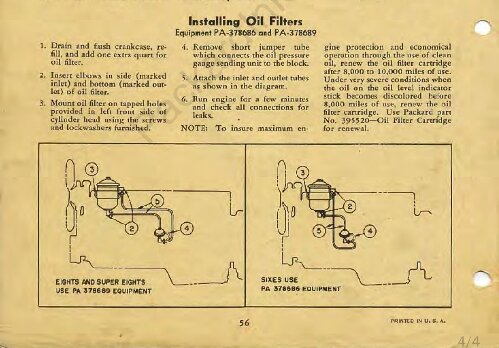
 4 way block.jpg (154.18 KB)
4 way block.jpg (154.18 KB)